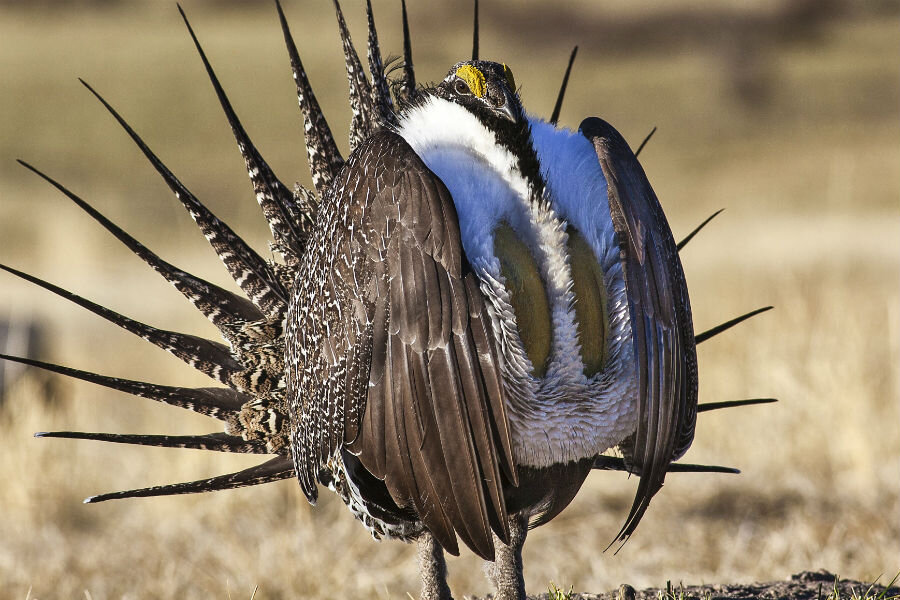White House won't protect sage grouse: Good news?
Loading...
The White House is announcing Tuesday that it will not offer federal protection for the greater sage grouse, an iconic ground-dwelling bird at the forefront of a long-burning environmental debate.
The Department of the Interior said Tuesday that the chicken-sized grouse – one of the most recognizable species of the West – did not meet the required standard to be listed as threatened or endangered under the Endangered Species Act.
Due to ranching, gas drilling, mineral mining, and wildfires on its habitat, the grouse population has fallen from several million to about 200,000, reports The Christian Science Monitor.
But in recent months, federal agencies, conservationists, governors, and landowners across millions of acres of grasslands in 10 states have come together to work to reduce the threat to the grouse.
Department Secretary Sally Jewell says the response was unprecedented, calling it “the largest land conservation effort in US history."
Officials noted that threats to the bird have been reduced on more than 90 percent of its breeding habitat.
"The greater sage grouse remains relatively abundant and well-distributed across the species’ 173-million acre range and does not face the risk of extinction now or in the foreseeable future," reported the USDA.
Choosing to not list the bird under the Act is a nod to the unprecedented cooperation among "groups that typically are at one another’s throats, from federal agencies to conservationists to governors to landowners," reported the Monitor’s Amanda Paulson in June.
As Ms. Paulson wrote, the government "uses the Endangered Species Act as a stick: If these groups don’t come together and act on their own, the sage grouse could be listed by Sept. 30, and that would bring in the federal government in a much more restrictive way."
The Bureau of Land Management, for instance, "historically not known for its sympathy to conservation efforts," has joined the effort – already a mark of progress, noted the Monitor.
But environmentalists say that by not listing the sage grouse, the government has caved to political pressure, from industries that argue there are billions of dollars to be lost in economic activity.
Listing the iconic bird as endangered would have forced big changes to ranching and energy operations across the region.
The decision is no large surprise for those who’ve been following hints from officials, who have for months suggested that local conservation efforts could be enough without federal protection, according to The Washington Post.
"I remain optimistic that they might not receive the 'endangered' designation," Interior Secretary Sally Jewell said earlier this month, at a breakfast hosted by The Christian Science Monitor.
"This is not only good news for the greater sage grouse," said Secretary Jewell in a video statement released Tuesday, "but for Westerners who want to honor their proud wildlife and outdoor heritage – and pass it on to future generations."








